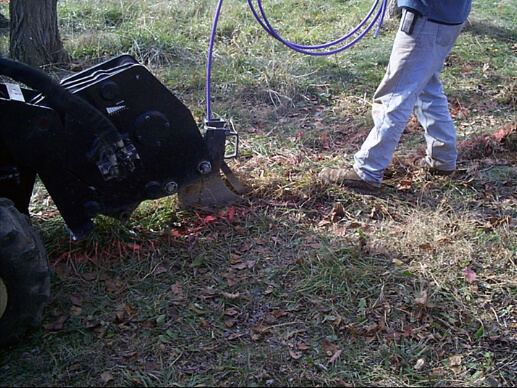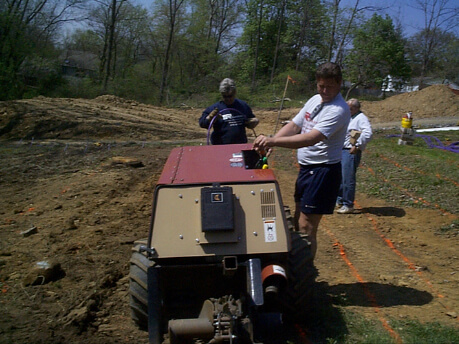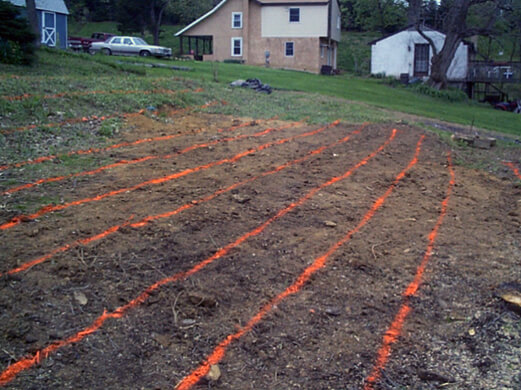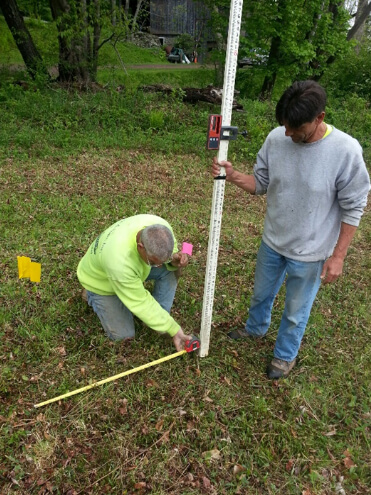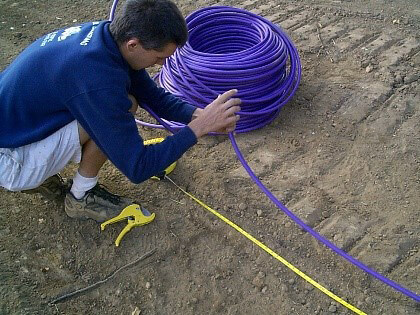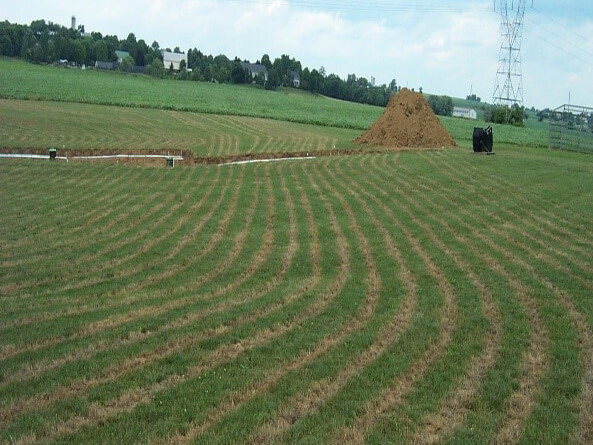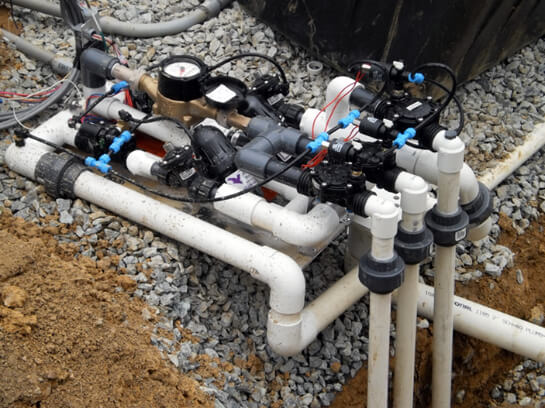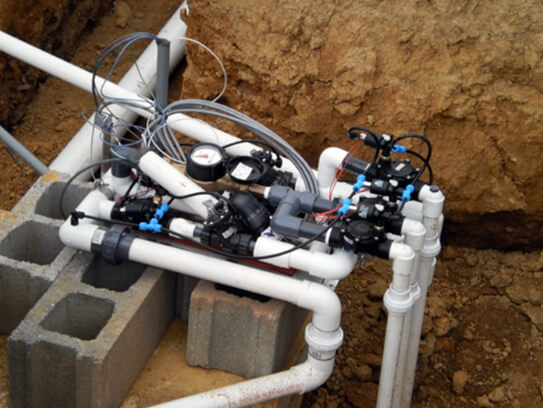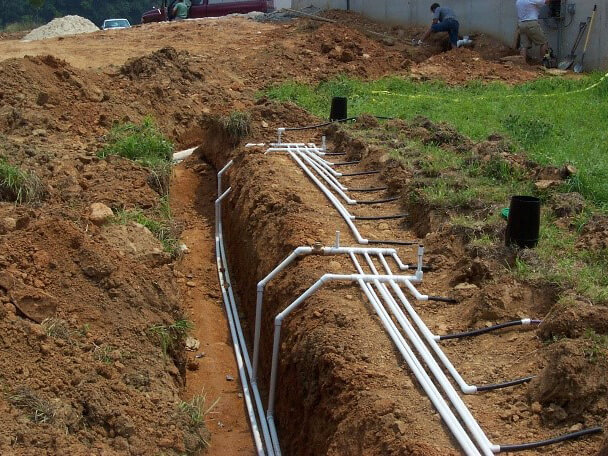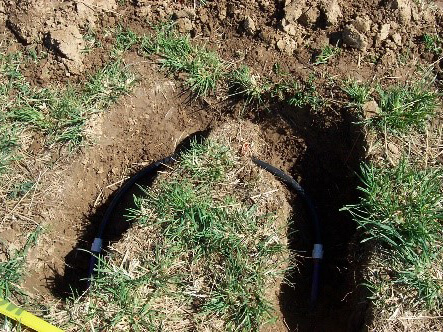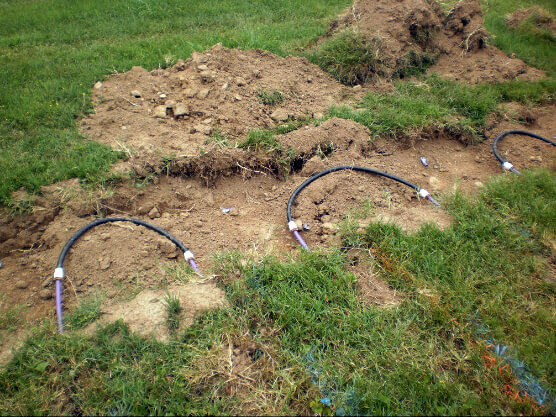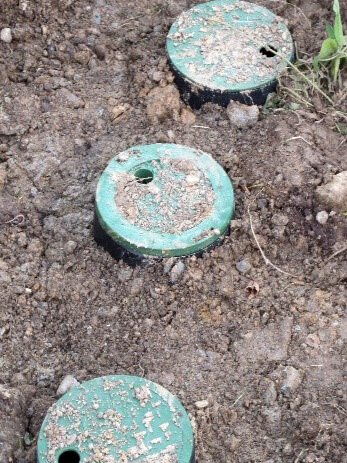Step 1: Contact your local SEO for soil the moisture check. Tubing can only be installed in dry soil conditions.
Note: tanks may be installed prior to the drip system installation.
Step 2: Rent the proper machine for tubing installation. A vibratory plow is required for in ground installations; no cable pullers.
Step 3: Using an elevation control method, layout each tubing run on contour. Layout to be inspected by SEO.
Step 4: Cut the tubing at the proper lengths (+4’) and Install tubing at depth specified by the designer.
Step 5: Install the Hydraulic Unit at location specified on the design. Gravel base needed or unit can be installed on tank. Must have gravity flow back to the building sewer line prior to the first tank.
Step 6: Open the trench from the Hydraulic Unit to the field to run the supply and return lines (3’ or deeper). Then construct either the top feed manifolds (slopes > 5%) or side feed manifolds (slopes < 5% slope).
Step 7: Construct loop ends to connect the runs of tubing. Loop ends must be elevated to pitch into the drip tubing with 14” of final cover.
Step 8: Install the pump tank components including the pump, the Cool Guide®, the pump kit, and the float tree supplied by PreDoC, Inc. as well as the junction box, wiring, and other components supplied by contractor.
Step 9: Mount the control panel and complete all necessary wiring. Don’t forget to ground the panel.
Step 10: Before backfilling any of the system components, the start-up must be performed. You must schedule the start-up with the Manufacturer’s Rep, the SEO, and the contractor. For start-up, the pump tank must be filled with clean water. The system will be pressure tested for leaks prior to being backfilled. The Manu. Rep. will set all panel settings at the time of start-up.
Step 11: Add the insulated enclosure to the Hydraulic Unit and prepare to backfill around all components.
VERY IMPORTANT! This is a time dosed system. Contractor must prevent infiltration of rainwater. All lids must either be 4” above grade or be equipped with a bolt down lid with watertight gasket. Homeowner will experience frequent alarms if the tanks infiltrate.

